Public transportation in Cape Town consists of the MyCiti bus service and the Metrorail suburban and commuter train service. During my time in Cape Town, I decided not to leave Cape Town and its closest surrounding cities, and thus had no reason to ride Metrorail. While I can comment on the accessibility of the city bus service, I have no accessibility information for Metrorail.
Wheelchair Accessible MyCiti Bus
MyCiti is bus rapid transit system that has operated in Cape Town since 2010. It was designed to be universally accessible to people with disabilities, wheelchair users, the elderly and parents with baby strollers.
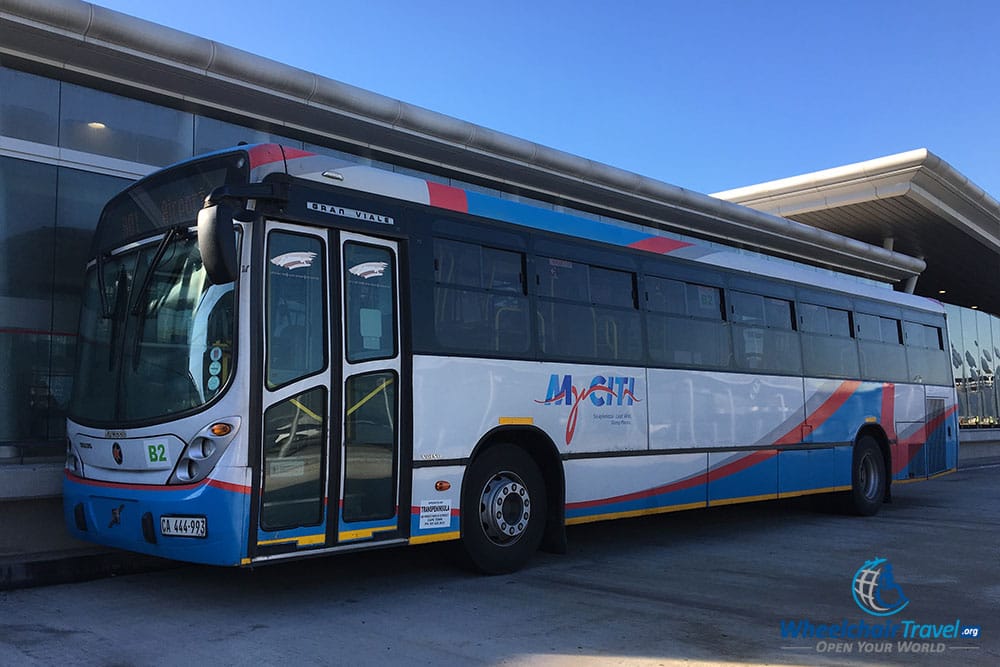
The system consists of 40 routes, 41 stations and more than 600 bus stops. Buses are primarily low-floor, but some express routes utilize high-floor buses. Every bus, whether low- or high-floor, has a system of ramps to permit barrier-free entry for wheelchair users.
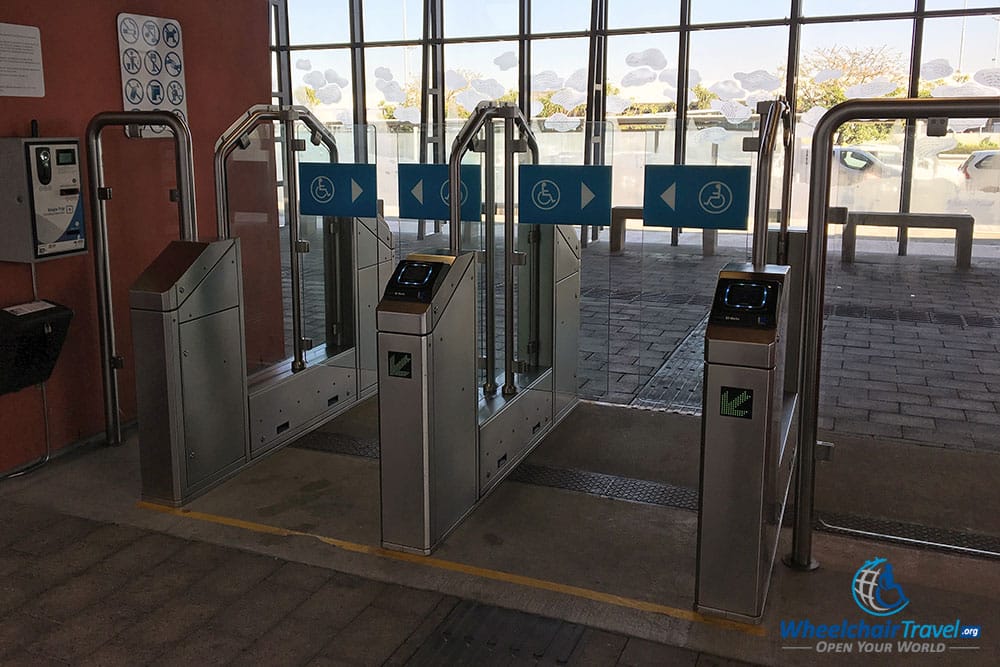
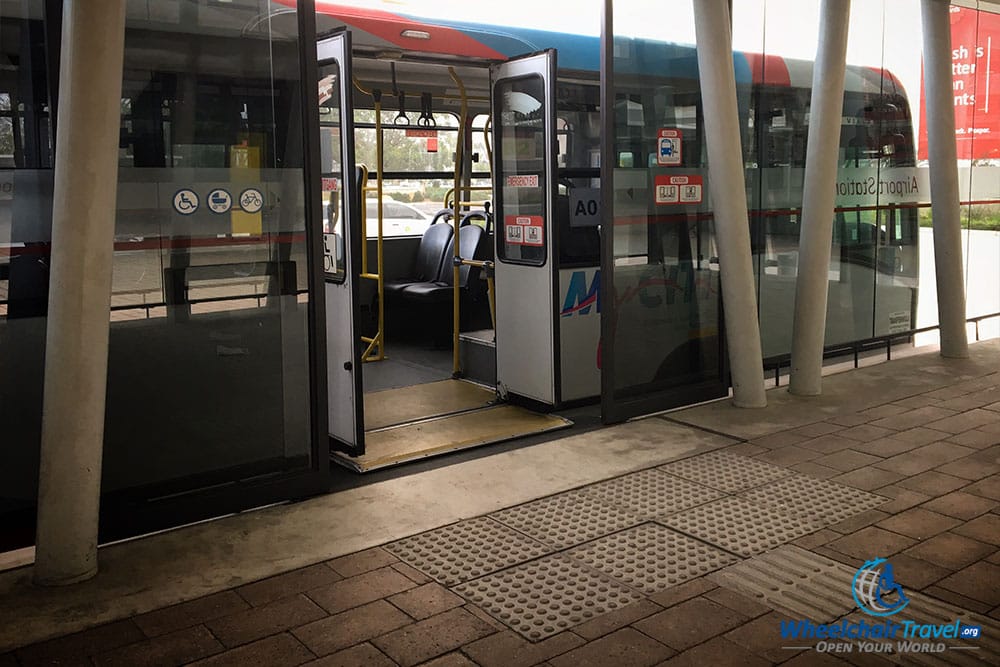
The 41 MyCiti stations are located in high demand areas, with many stations serving as connection points between multiple bus routes. Stations are enclosed buildings or platforms with automated fare gates at the entrances and exits. Each station has wheelchair accessible fare gates, like those pictured above.
Station platforms are elevated to be level with the bus. Ramps extend from the bus to bridge the gap with the station platform, offering a barrier-free entry route for wheelchair users. Buses on routes serving curbside stops have an extended ramp that folds out onto the curb or sidewalk. I did not find any stations or stops that were not wheelchair accessible – suggesting to me that the goal of universal access has been achieved.
That said, I did encounter several buses that had broken ramps. On one occasion, two buses in a row had a broken ramp, which cost me about 30 minutes of time. I applaud the city making such a bold commitment to accessibility for everyone, but they have to maintain their equipment to a higher standard!
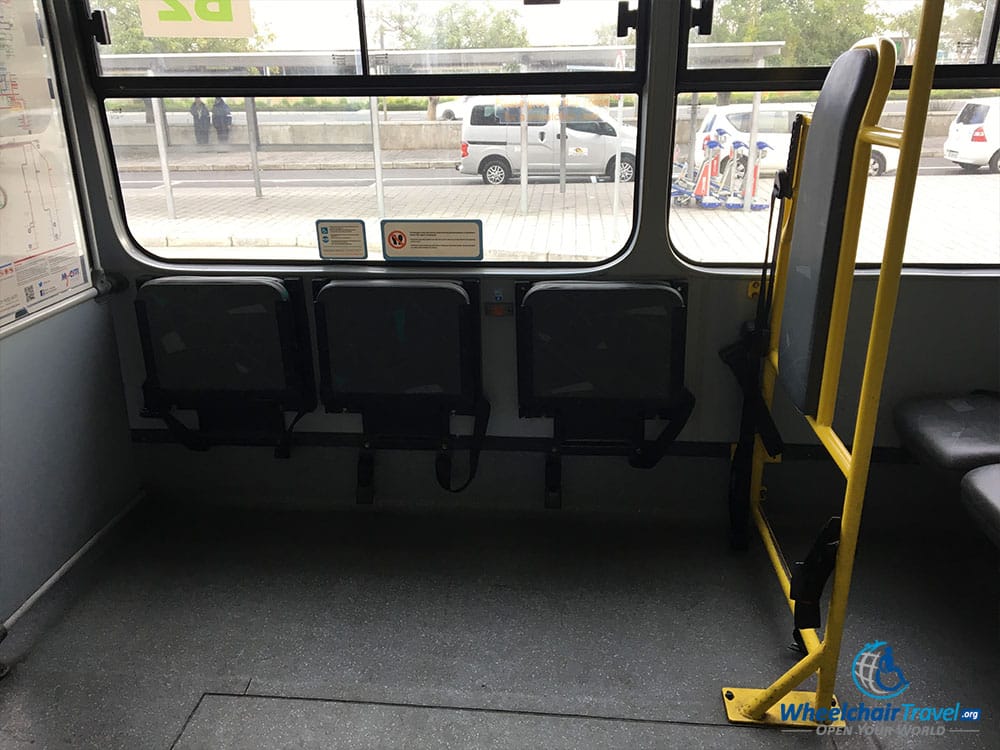
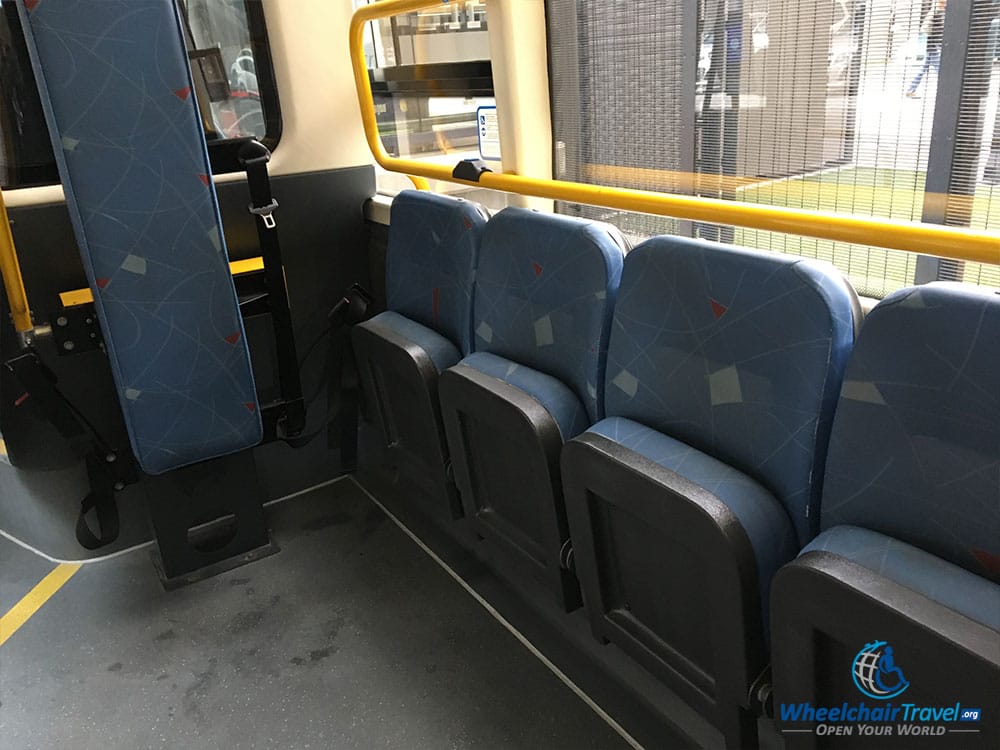
Pictured above are wheelchair spaces on two different MyCiti buses. Both wheelchair spaces easily accommodated my power wheelchair. A seatbelt/securement system was available, but I opted not to use it. The wheelchair space has seats affixed to the wall which can fold down for use by able-bodied riders. What I liked most was that there natural position is folded up, and a spring system forces the seats to fold up unless they are being used. This made it possible to roll on and off the bus quickly and without any intervention from the driver.
For more information on the city bus system in Cape Town, visit www.myciti.org.za. To access the MyCiti route maps, click here.
MyCiti Fares & Passes
Fares are paid electronically at fare gates (at MyCiti stations) or on the bus (if boarding at a curbside bus stop) using a reloadable MyCiti MyConnect card. You must have a MyConnect card before riding – cards can be purchased at a MyCiti bus station or at a participating retailer. To see a map of purchase locations, click here.
I purchased my fare card at the Cape Town International Airport Station. The cost is 35 ZAR (~$2.50 USD), plus the amount you wish to load onto the card. I added 300 ZAR in value to the card.
When you load the card, you should add it as a MyCiti Mover Travel Package. Any funds added as a package will expire within 3 years of loading, but you will save 30% off the standard bus fare. I figured I would have no trouble using my 300 ZAR either on this trip or the next – I have three years!
The actual fare that is deducted from your card is based on the distance traveled. Transfers between buses bear no additional cost, but your total trip distance will be calculated to determine your fare.

The fare chart above explains the way fares are calculated. If you purchase the MyCiti Mover package like I did, bus fares range anywhere from 6.40 ZAR to 27.70 ZAR (~$0.50 USD to ~$2.00 USD), depending on the distance traveled. Any trip to or from the airport will have an additional 52.10 ZAR added to the distance-based fare.
For more information on MyCiti bus fares, click here.
Metrorail Suburban Trains
Although I have not ridden the Metrorail in Cape Town, I was told that there is some level of wheelchair access possible. For more information on the suburban and commuter trains serving the Western Cape, visit www.metrorail.co.za. For the latest information on Metrorail fares, click here.
City-Sightseeing Hop-on Hop-off Tour Buses
Another option for getting around to the various tourist attractions (including some not served by the city bus) is the City-Sightseeing Hop-on Hop-off Bus.

In addition to riding public transportation, I used the City-Sightseeing bus to access tourist attractions like Table Mountain and the Kirstenbosch National Botanical Gardens.
To learn more about how these tourist buses can fit into your transportation strategy, read my blog post on the 13 Best Wheelchair Accessible Hop-On Hop-Off Bus Tours (Cape Town is included).



